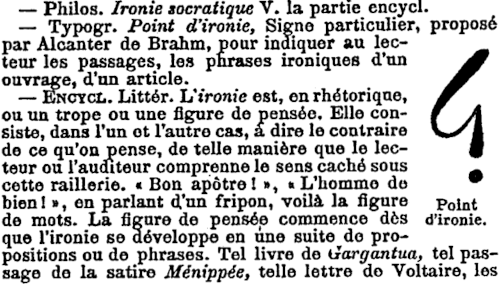Modern punctuation doesn’t always do the job, so writers have suggested various improvements. In the 1580s, English printer Henry Denham proposed a “percontation point,” ⸮, to be used at the end of a rhetorical question. In 1668, Anglican clergyman John Wilkins suggested using an inverted exclamation point, ¡, for the same purpose.
In the 1840s, Belgian newspaper publisher Marcellin Jobard introduced a small arrow whose orientation might indicate irony, irritation, indignation, or hesitation.
In 1899, French poet Alcanter de Brahm suggested a point d’ironie to indicate that a sentence was ironic or sarcastic:

And in a 1966 essay, French writer Hervé Bazin proposed (left to right) the irony point, the doubt point, the conviction point, the acclamation point, the authority point, and the love point:

None of these has caught on, but the interrobang, ‽, introduced in 1962 by Martin Speckter to denote a question expressed in an exclamatory manner, is still included in many fonts.
More at Type Talk.
